
Kampot: The Riverside Gem of Cambodia
Discover Kampot, Cambodia's riverside gem, known for its stunning landscapes, historical charm, world-class pepper farms, and vibrant market scene.
Kampot, a serene town nestled along the banks of the Praek Tuek Chhu River, offers a blend of natural beauty, colonial architecture, and a laid-back vibe. The town is known for its charming streets lined with French colonial buildings, giving it a unique historical touch. The picturesque riverside is perfect for a relaxing stroll or a scenic boat ride, and the nearby Bokor National Park provides breathtaking views and thrilling outdoor adventures. Beyond its stunning landscapes, Kampot is famous for its pepper farms. The region's pepper is considered some of the best in the world, and visiting a pepper plantation is a must. The local cuisine, influenced by both Cambodian and French flavors, offers a delectable culinary experience. Be sure to try the seafood, which is fresh and flavorful, often seasoned with the renowned Kampot pepper. Kampot's vibrant market scene allows tourists to immerse themselves in local culture. The night market is particularly popular, offering everything from handmade crafts to delicious street food. For those interested in history, the town’s museums and old buildings narrate fascinating tales of its past. With its mix of natural wonders, cultural richness, and historical charm, Kampot is a delightful destination for any traveler seeking a genuine Cambodian experience.
Local tips in Kampot
- Visit a pepper farm to see how the famous Kampot pepper is grown and processed.
- Take a sunset boat cruise on the Praek Tuek Chhu River for stunning views.
- Explore Bokor National Park for hiking, waterfalls, and panoramic views.
- Try the local seafood, especially dishes seasoned with Kampot pepper.
- Check out the night market for unique souvenirs and delicious street food.
- Rent a bicycle to explore the town and its surrounding countryside at a leisurely pace.
- Visit the old French colonial buildings for a glimpse into Kampot's historical past.
- Plan your visit during the dry season (November to April) for the best weather conditions.
Kampot: The Riverside Gem of Cambodia
Kampot, a serene town nestled along the banks of the Praek Tuek Chhu River, offers a blend of natural beauty, colonial architecture, and a laid-back vibe. The town is known for its charming streets lined with French colonial buildings, giving it a unique historical touch. The picturesque riverside is perfect for a relaxing stroll or a scenic boat ride, and the nearby Bokor National Park provides breathtaking views and thrilling outdoor adventures. Beyond its stunning landscapes, Kampot is famous for its pepper farms. The region's pepper is considered some of the best in the world, and visiting a pepper plantation is a must. The local cuisine, influenced by both Cambodian and French flavors, offers a delectable culinary experience. Be sure to try the seafood, which is fresh and flavorful, often seasoned with the renowned Kampot pepper. Kampot's vibrant market scene allows tourists to immerse themselves in local culture. The night market is particularly popular, offering everything from handmade crafts to delicious street food. For those interested in history, the town’s museums and old buildings narrate fascinating tales of its past. With its mix of natural wonders, cultural richness, and historical charm, Kampot is a delightful destination for any traveler seeking a genuine Cambodian experience.
When is the best time to go to Kampot?
Iconic landmarks you can’t miss
Bokor Hill Station
Discover the enigmatic Bokor Hill Station, where history meets breathtaking landscapes in the heart of Cambodia's Cardamom Mountains.
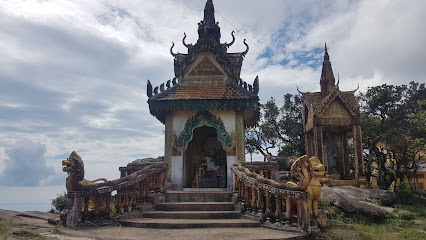
Preah Monivong Bokor National Park
Explore Preah Monivong Bokor National Park: A Natural Paradise in Cambodia with Scenic Views and Rich Biodiversity.
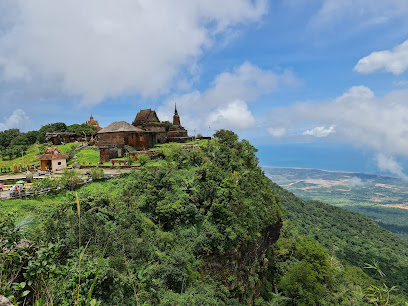
La Plantation
Experience the essence of Cambodian culture at La Plantation, where organic farming meets authentic dining in the scenic Kampot region.
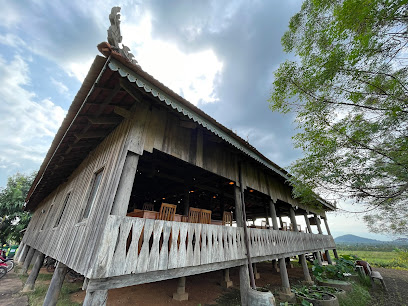
Rikitikitavi
Discover Rikitikitavi: Your riverside sanctuary in Kampot, blending comfort, cuisine, and captivating views for an unforgettable stay.
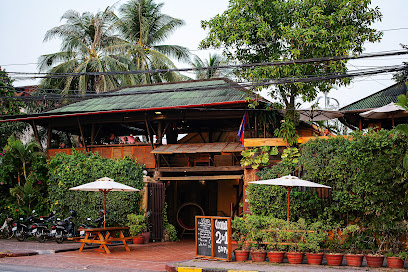
Aroma House
Experience the vibrant flavors of Mediterranean and Middle Eastern cuisine at Aroma House in Kampot, a culinary gem for travelers and locals alike.

Popokvil Waterfall
Experience the serene beauty of Popokvil Waterfall, a stunning natural retreat in Cambodia, perfect for relaxation and exploration amidst nature's wonders.
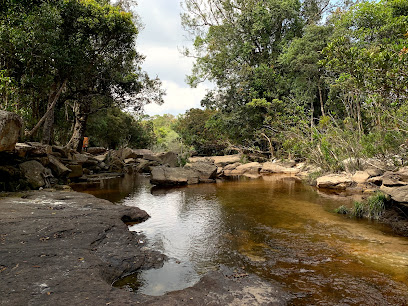
Kampot Night Market
Discover the vibrant Kampot Night Market, where local flavors, crafts, and nightlife come together for an unforgettable Cambodian experience.
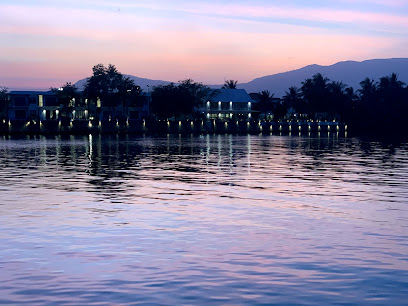
Wat Sampov Pram
Discover the tranquility and rich heritage of Wat Sampov Pram, an enchanting Buddhist temple offering stunning views and spiritual insights in Cambodia.
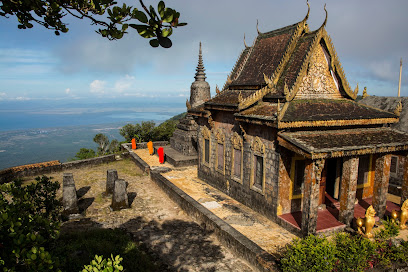
Karma Traders Kampot
Discover the vibrant community and cozy accommodations at Karma Traders Kampot, your home away from home in the heart of Cambodia.

Sabay Beach
Discover tranquility and adventure at Sabay Beach, a picturesque hotel along the Riverfront in Kampot, Cambodia, perfect for relaxing getaways.

Rusty Keyhole
Discover the flavors of Krong Kampot at Rusty Keyhole, a delightful restaurant offering a fusion of local and international dishes in a charming setting.
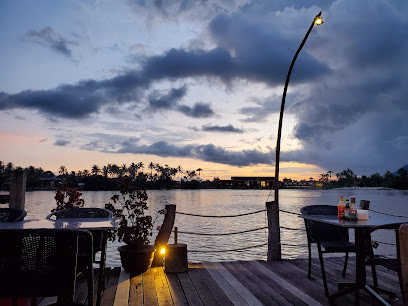
Phnom Chhngok Cave
Explore the remarkable Phnom Chhngok Cave, an archaeological treasure in Cambodia, featuring stunning formations and ancient cultural significance.
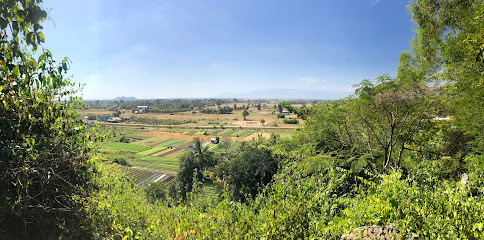
Arcadia Backpackers
Discover the vibrant energy of Krong Kampot at Arcadia Backpackers, where comfort meets affordability for the adventurous traveler.

Villa Vedici
Discover tranquility at Villa Vedici, a charming riverfront hotel offering comfort, local culture, and breathtaking views for an unforgettable getaway.

Bamboo Bungalow
Discover serenity and comfort at Bamboo Bungalow, a tranquil lodging nestled in the stunning landscapes of Krong Kampot, Cambodia.

Unmissable attractions to see
Grand World Phu Quoc
Explore the enchanting Grand World Phu Quoc, where pristine beaches meet vibrant culture for an unforgettable travel experience in Vietnam.
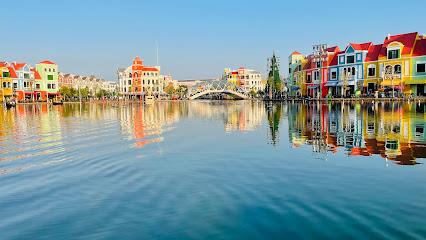
Phú Quốc
Explore the stunning beaches, lush jungles, and vibrant culture of Phú Quốc, Vietnam's tropical paradise known for its breathtaking landscapes.
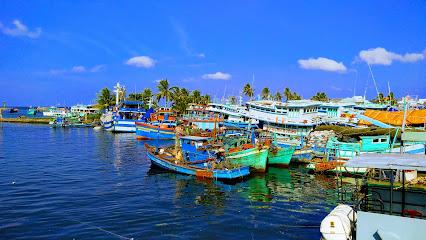
Kep Crab Market
Discover the freshest seafood and local flavors at Kep Crab Market, a vibrant seafood market in Krong Kaeb, Cambodia.
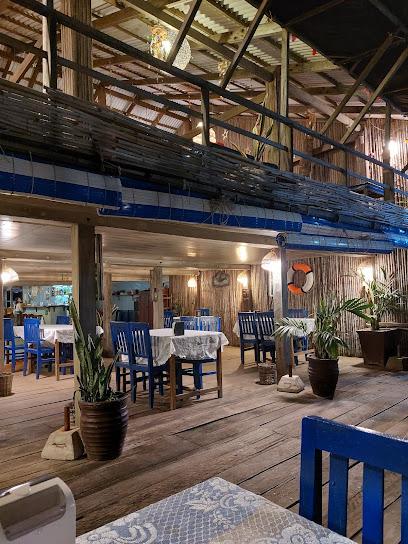
VinWonders Phú Quốc
Experience the thrill of adventure at VinWonders Phú Quốc, Vietnam's premier amusement park, with rides, shows, and unforgettable family fun.
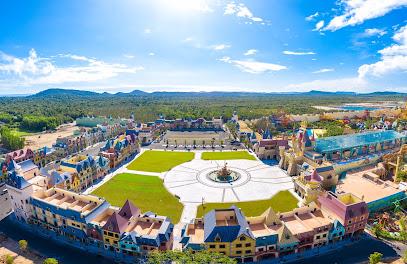
Phu Quoc Night Market
Explore the bustling Phu Quoc Night Market for an unforgettable culinary adventure and a taste of local culture.
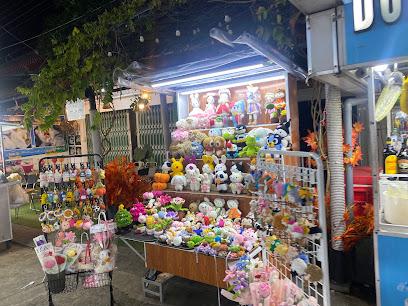
Starfish Beach
Explore the breathtaking beauty of Starfish Beach in Phu Quoc, Vietnam, where pristine sands and vibrant marine life await your discovery.
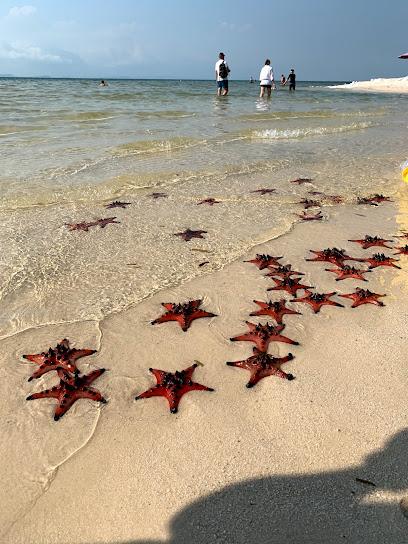
Bokor Hill Station
Discover the charm of Bokor Hill Station, where history meets stunning landscapes in Cambodia's mountainous retreat.
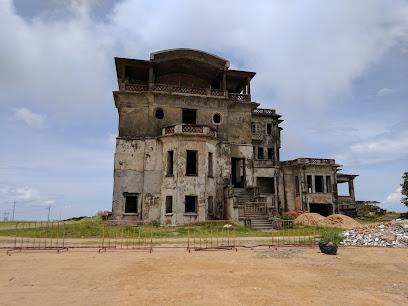
Preah Monivong Bokor National Park
Explore the breathtaking landscapes and rich history of Preah Monivong Bokor National Park, a top destination for nature lovers and adventurers.
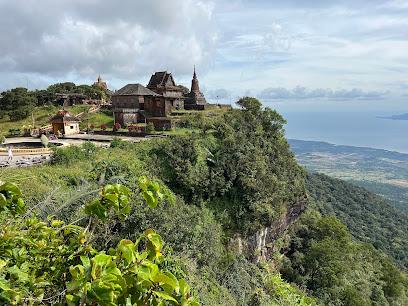
Dinh Cậu
Explore Dinh Cậu Shrine in Phu Quoc, Vietnam – a spiritual haven with stunning coastal views and rich cultural heritage awaiting your discovery.
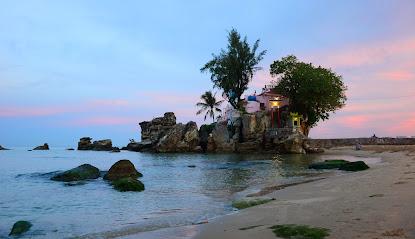
Phu Quoc National Park
Explore the breathtaking landscapes and rich biodiversity of Phu Quoc National Park, a must-visit destination for nature lovers and adventure seekers in Vietnam.
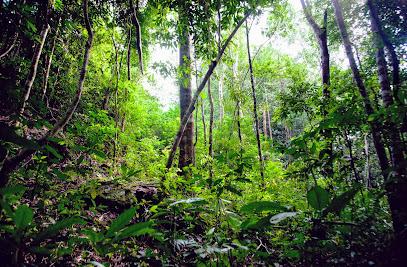
Popokvil Waterfall
Explore the breathtaking beauty of Popokvil Waterfall, a serene natural wonder in Cambodia perfect for adventure and relaxation.
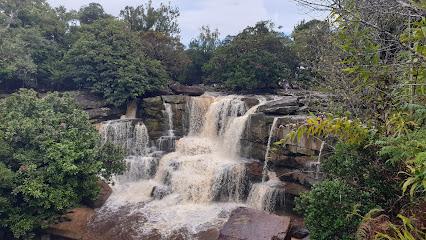
Lok Yeay Mao Monument
Explore the Lok Yeay Mao Monument in Krong Kampot, a historical landmark celebrating Cambodian heritage amid stunning natural beauty.

Ham Ninh fishing town
Experience the authentic charm of Ham Ninh fishing town on Phu Quoc Island, where fresh seafood and stunning coastal views await.
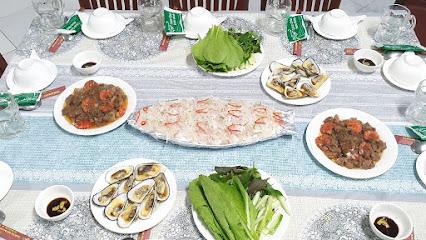
Kep Beach
Discover the tranquil beauty of Kep Beach in Cambodia, where stunning sunsets and fresh seafood await your visit.
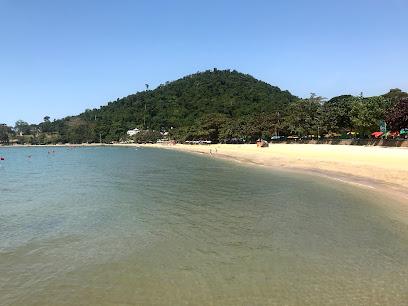
White Lady Statue
Explore the captivating White Lady Statue in Krong Kaeb, Cambodia, where history, art, and culture converge in a breathtaking landscape.
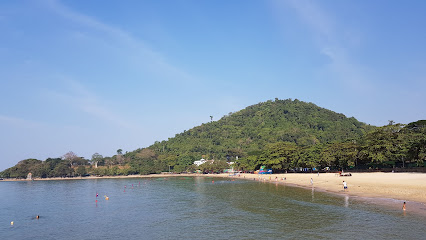
Essential places to dine
Aroma House
Experience authentic Mediterranean and Middle Eastern flavors at Aroma House in Kampot - where every meal is a delightful journey.
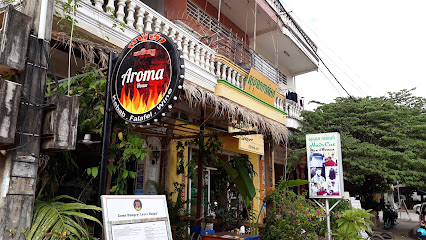
Simons Tandoor Indian Restaurant
Experience authentic Indian flavors at Simons Tandoor Indian Restaurant in Kampot - a culinary delight not to be missed!
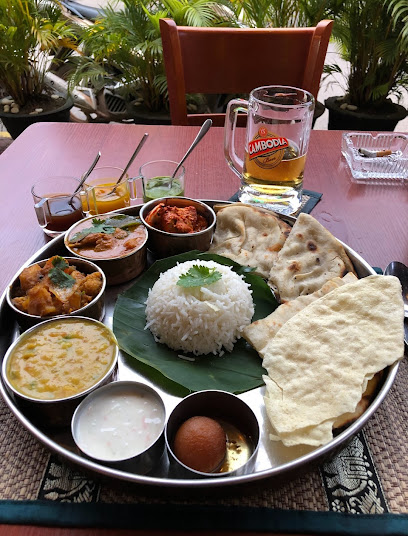
Simple Things
Discover Simple Things in Kampot: where delightful vegetarian cuisine meets wellness through yoga and coffee.
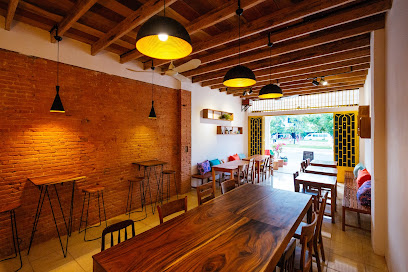
Lemongrass Bistro
Experience authentic Thai flavors at Lemongrass Bistro in Krong Kampot – where delicious cuisine meets warm hospitality.
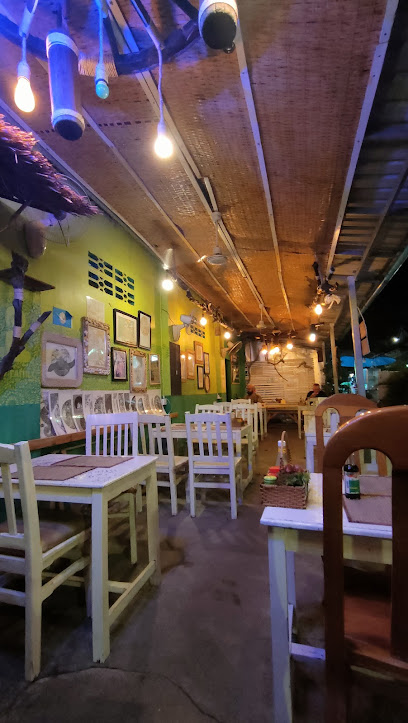
L’Osteria in Kampot
Experience authentic Italian cuisine at L’Osteria in Kampot - where every bite transports you straight to Italy's culinary heart.
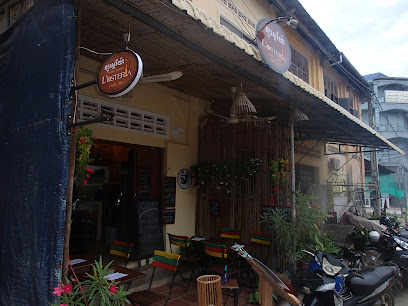
Tertúlia Restaurant Kampot
Experience authentic Portuguese cuisine at Tertúlia Restaurant in Kampot – where traditional flavors meet warm hospitality.
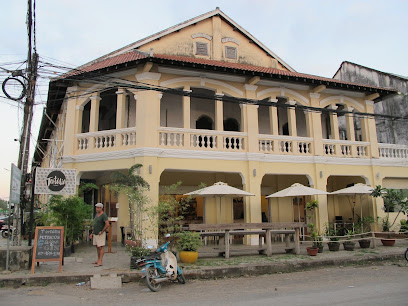
Kampot Seafood & Pepper/cooking class
Experience authentic Cambodian flavors at Kampot Seafood & Pepper with fresh seafood delights and engaging cooking classes.
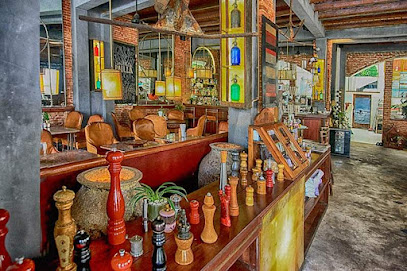
Rusty Keyhole
Experience delightful cuisine at Rusty Keyhole in Kampot, where local flavors meet international flair in a charming setting.
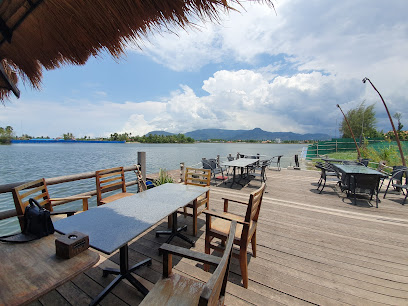
Artisans Kampot
Experience the authentic taste of Cambodia at Artisans Kampot - where tradition meets modern dining in Krong Kampot.
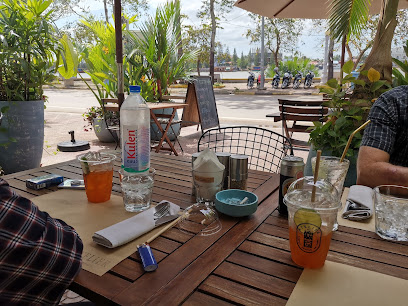
Vanna Restaurant & Bar
Discover culinary excellence at Vanna Restaurant & Bar in Krong Kampot – where local flavors meet international flair.
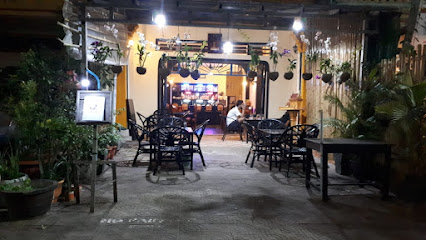
Twenty three bistro kampot
Experience exquisite Cambodian cuisine at Twenty Three Bistro in Kampot – where every dish tells a story.
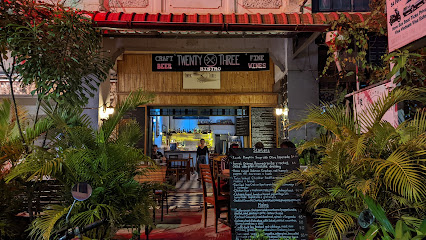
MasalaTwist Indian Halal Restaurant
Experience the vibrant flavors of authentic Indian cuisine at MasalaTwist Indian Halal Restaurant in Krong Kampot.
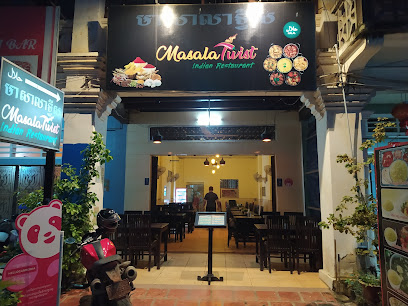
Burgershack Kampot
Experience delicious burgers made with fresh local ingredients at Burgershack Kampot—where flavor meets affordability in a vibrant setting.
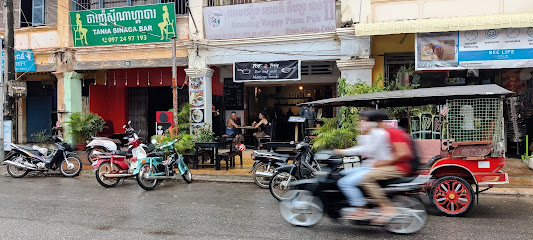
Monkey Republic Kampot Cafe, Bar & Kitchen
Discover Monkey Republic Kampot: A vibrant restaurant offering local flavors and international cuisine amidst the charm of Krong Kampot.
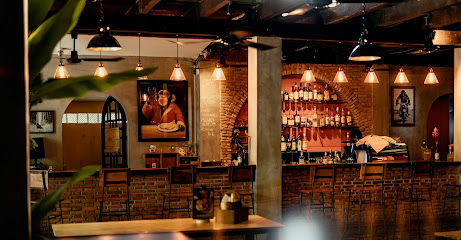
The lost kitchen
Savor authentic Greek cuisine at The Lost Kitchen - where every dish tells a story of tradition and flavor.
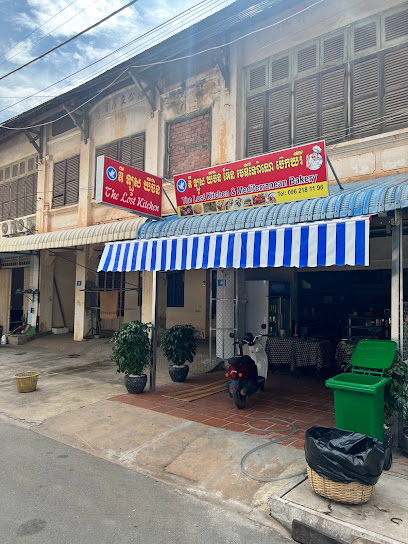
Markets, malls and hidden boutiques
Tiny Kampot Pillows
Explore Tiny Kampot Pillows in Krong Kampot for unique handmade souvenirs that reflect the beauty and artistry of Cambodian culture.
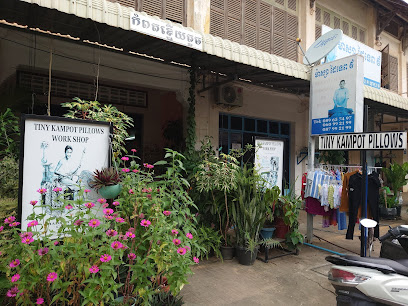
Kampot Souvenirs Kampot Pepper Shop
Explore the best of Kampot at the Kampot Souvenirs Kampot Pepper Shop, where local flavors and unique gifts come together.
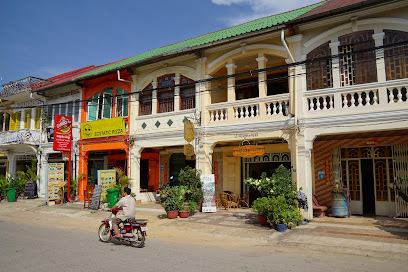
Sakura Recycle Shop Japan Kampot
Explore Sakura Recycle Shop in Kampot for unique thrift finds and sustainable shopping, perfect for tourists seeking local treasures.
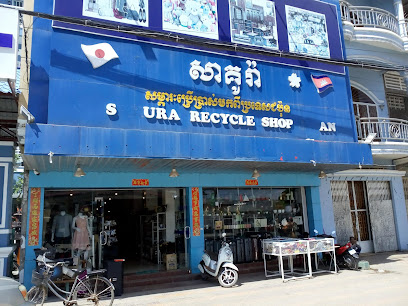
Chakriya Clothes Shop
Discover stylish apparel and unique local fashion at Chakriya Clothes Shop in Krong Kampot, the perfect shopping destination for travelers.
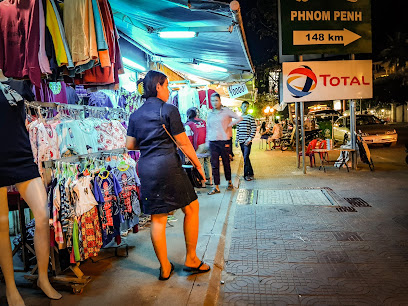
No Strings Attached Music Shop Kampot
Explore vibrant music culture at No Strings Attached Music Shop in Kampot, where instruments, lessons, and local talent come together.
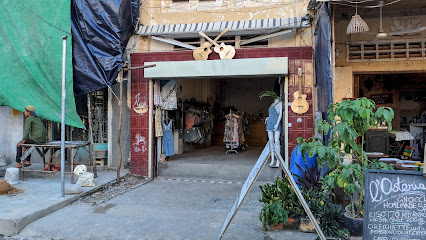
Brand INT Collection Kampot
Discover unique fashion at Brand INT Collection Kampot, where local culture meets contemporary style in the heart of Cambodia's charming riverside city.
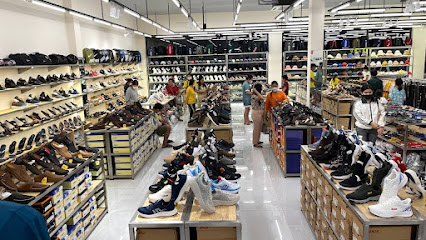
Coco Palm Boutique
Discover unique local crafts and stylish fashion at Coco Palm Boutique in Krong Kampot, a must-visit for every traveler seeking authentic Cambodian souvenirs.

Pawleys shop
Discover the local flavors and essential goods at Pawleys Shop, a charming grocery store in the heart of Krong Kampot.
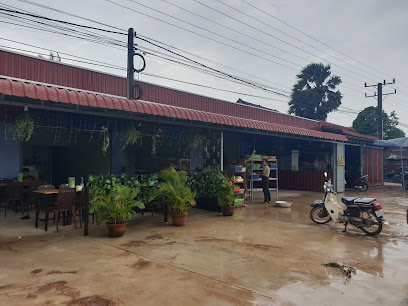
Rong Boutique រ៉ុង បូទីក
Shop unique handcrafted treasures at Rong Boutique in Kampot, where local craftsmanship meets modern elegance.
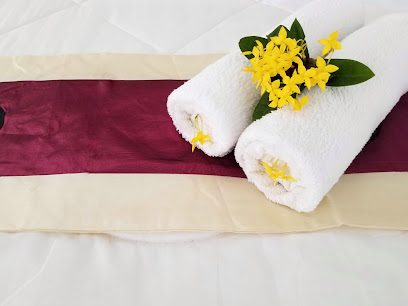
Kampot Orkide Boutique
Explore authentic Cambodian craftsmanship at Kampot Orkide Boutique, where local artistry meets sustainable shopping in the heart of Krong Kampot.
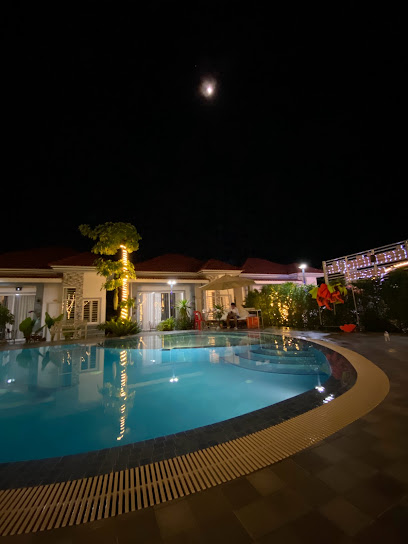
La Plantation Agriculturism Shop
Experience the essence of Cambodian agriculture at La Plantation Agriculturism Shop, home to the world-renowned Kampot pepper and organic local products.
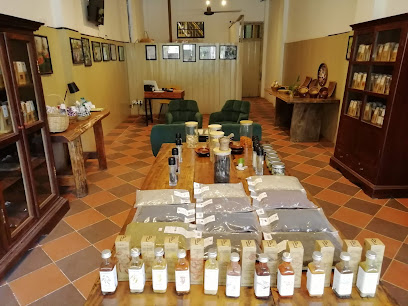
Ylang Ylang Gallery
Explore the vibrant artistic flavors of Cambodia at Ylang Ylang Gallery, a must-visit for art lovers in Krong Kampot.
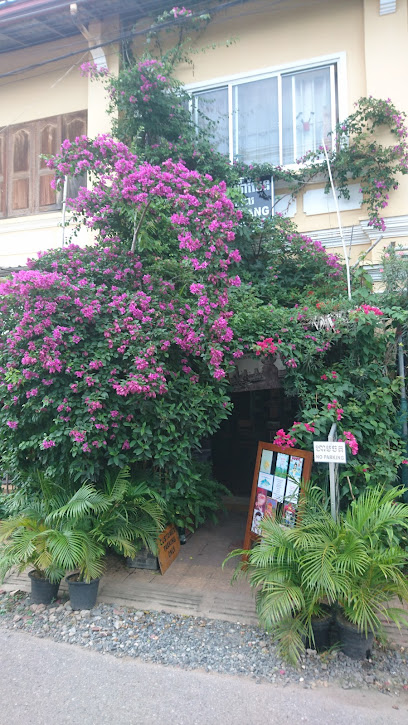
Kate Boutique
Explore Krong Kampot's Kate Boutique for quality baby products, stylish clothing, and essential gear for your little ones.
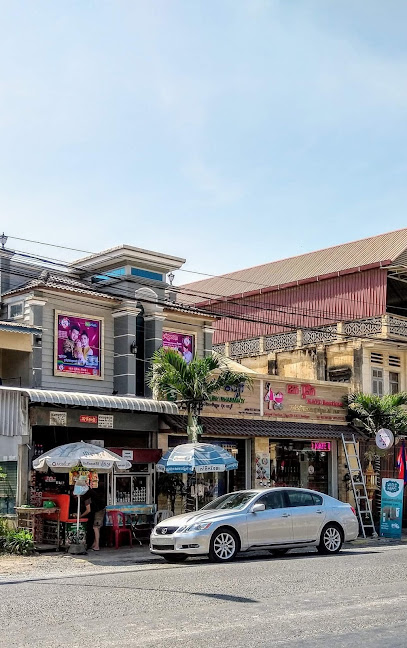
ស្រីម៉ៅលក់គ្រឿងសង្ហារឹម
Explore unique handcrafted furniture at Srey Mao Furniture Store in Krong Kampot, where artistry meets tradition in every piece.
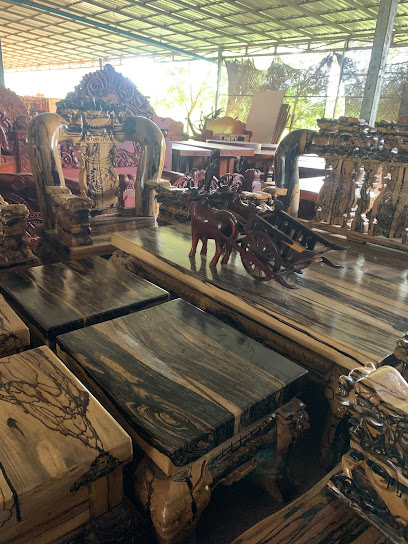
ដេប៉ូលឹមជឺជាវលក់ម៉ូទ័រនិងសំភារះជាងគ្រប់មុខ
Discover the heart of Kampot with unique home goods and motorbikes, blending local culture with everyday essentials for every traveler.
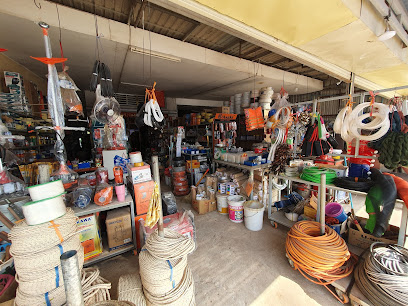
Essential bars & hidden hideouts
Oh Neil's Irish Bar
Discover the vibrant atmosphere and authentic Irish flavors at Oh Neil's Irish Bar, a must-visit destination in Kampot for every traveler.
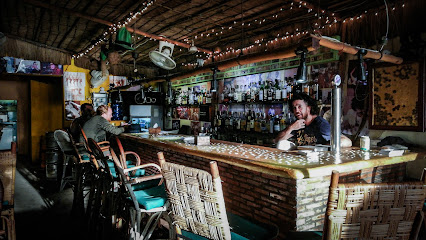
Rusty Keyhole Two
Experience the vibrant atmosphere and delicious offerings at Rusty Keyhole Two, Krong Kampot's premier sports bar for tourists and locals alike.
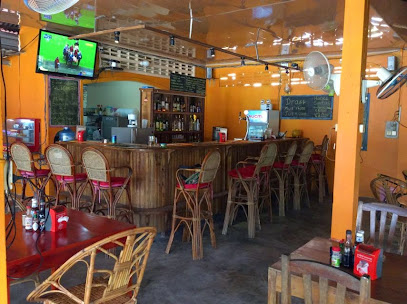
The Green Room - Kampot
Experience the vibrant atmosphere of The Green Room in Kampot, where delicious food, refreshing drinks, and local charm await every visitor.
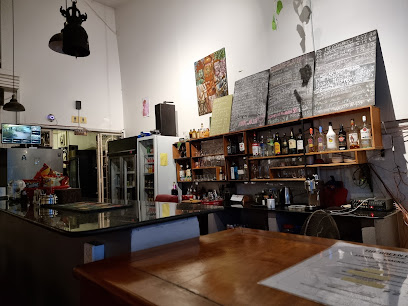
RINA PUB
Experience the vibrant nightlife of Kampot at Rina Pub, where affordable drinks and friendly games abound in a lively atmosphere.
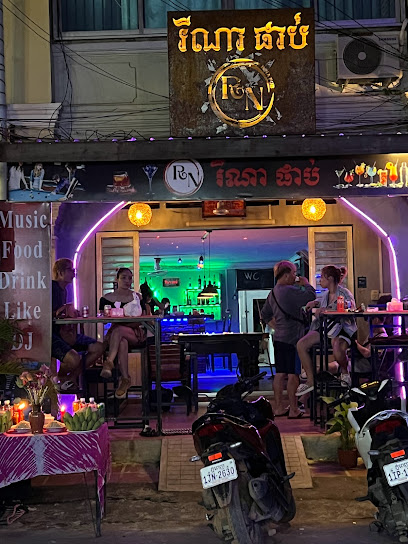
Bundy Bar
Discover the lively Bundy Bar in Krong Kampot, a perfect spot for affordable drinks and vibrant atmosphere amidst charming Cambodian culture.
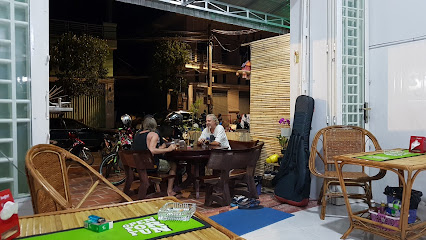
The Boys Riverside
Experience the vibrant nightlife at The Boys Riverside, a lively pub in Kampot offering drinks, music, and a welcoming atmosphere.
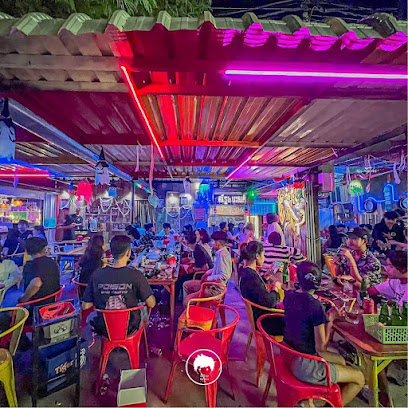
The Bay ឌឹបេ
Experience the vibrant nightlife at The Bay Bar in Krong Kampot, where stunning sunset views meet delicious drinks and great company.
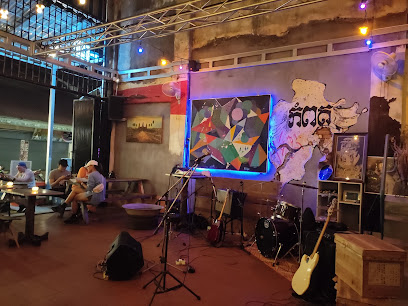
Pocahonta s pub
Experience the vibrant nightlife at Pocahontas Pub in Krong Kampot, where friendly faces and local drinks await you every night!
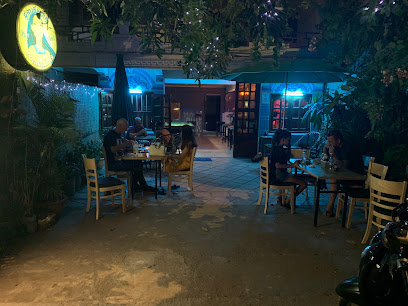
Joe's Bar
Discover the vibrant atmosphere of Joe's Bar in Krong Kampot, where refreshing drinks and friendly faces create unforgettable moments.
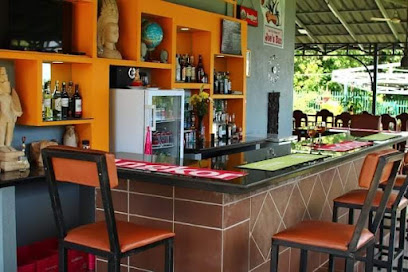
CoolGirl Bar
Discover the lively nightlife at CoolGirl Bar in Kampot, where fun, music, and socializing create unforgettable memories.
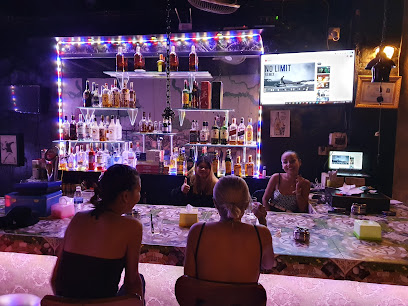
Glass House
Discover the vibrant nightlife of Krong Kampot at the Glass House, where stunning riverside views meet expertly crafted cocktails.
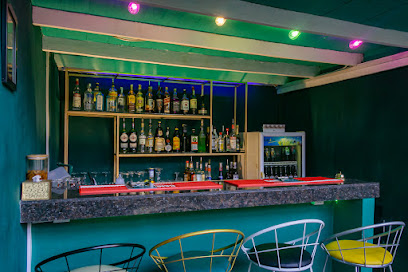
Nelly Bar
Experience the vibrant nightlife and local culture at Nelly Bar in Krong Kampot, Cambodia, where great drinks and friendly vibes await.

Ricky Bar
Experience the vibrant nightlife of Krong Kampot at Ricky Bar, where great drinks and lively ambiance create unforgettable memories.
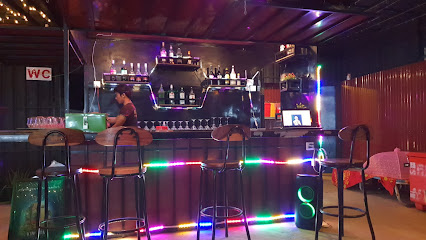
sweet heart bar @ kampot
Experience Kampot's vibrant nightlife at Sweet Heart Bar, where cocktails and camaraderie come together in a lively atmosphere.

ភោជនីយដ្ឋាន&KTV coolpalace
Discover the vibrant nightlife and friendly atmosphere of KTV Coolpalace in Krong Kampot, a must-visit bar for tourists seeking fun and entertainment.
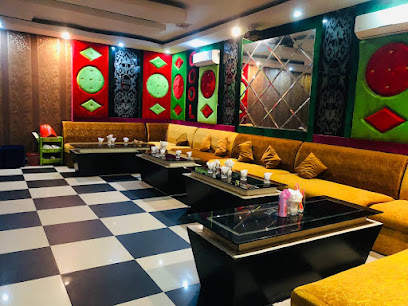
Travel experiences inspired by this city
Explore more travel diariesLocal Phrases
-
- Helloសួស្តី
[soo-sdei] - Goodbyeលាហើយ
[leah-heuy] - Yesបាទ
[baat] - Noទេ
[te] - Please/You're welcomeសូមហើយ
[soum heuy] - Thank youអរគុណ
[aw kuhn] - Excuse me/Sorryសូមស្រលាញ
[soum sralanh] - How are you?អ្នកសុខសប្ដិ
[nak sok sabai] - Fine. And you?សុខសប្ដិ ទា អ្នក?
[sok sabai teh nak?] - Do you speak English?តើអ្នកនៅហ៊ីងលិច?
[te nak now ingles?] - I don't understandខ្ញុំមិនយល់
[knhom min yol]
- Helloសួស្តី
-
- I'd like to see the menu, pleaseខ្ញុំចង់មើលម៉ឺនុ, សូម
[knhom chong moal menu, soum] - I don't eat meatខ្ញុំមិនបិកសាច
[knhom min bok sach] - Cheers!ឆែស៊ី
[chay] - I would like to pay, pleaseខ្ញុំចង់បង់ប្រាក់, សូម
[knhom chong bong braak, soum]
- I'd like to see the menu, pleaseខ្ញុំចង់មើលម៉ឺនុ, សូម
-
- Help!ជួយ!
[chouy!] - Go away!ចាកចេញ!
[chak chech!] - Call the Police!ហាងតាមសម្ពោង!
[haang tam sampheung!] - Call a doctor!ហាងចាកទៅវារ!
[haang chak tow vear!] - I'm lostខ្ញុំភេតបាន
[knhom phet ban] - I'm illខ្ញុំខឺង
[knhom kong]
- Help!ជួយ!
-
- I'd like to buy...ខ្ញុំចង់ទិញ...
[knhom chong tien...] - I'm just lookingខ្ញុំតែមើលប៉ុន្មាន
[knhom tae moal pohnman] - How much is it?តើវាលេខ?
[te vealak?] - That's too expensiveវាលេខមានលឿនដែល
[vealak mean laen dal] - Can you lower the price?តើអ្នកសំដៅថ្មីមលេខ?
[te nak somdao thompi vealak?]
- I'd like to buy...ខ្ញុំចង់ទិញ...
-
- What time is it?ម៉ោងណា?
[moang naa?] - It's one o'clockវាលេខមួយ
[vealak muoy] - Half past (10)លឿងនៅសួរគីរី
[laen now soo kirir] - Morningពង្ស
[pong] - Afternoonល្ងាច
[lang chaa] - Eveningល្ងាច
[lang chaa] - Yesterdayម្សិល
[msul] - Todayថ្ងៃនេះ
[tngai nih] - Tomorrowថ្ងៃស្អប់
[tngai saap] - 1មួយ
[muoy] - 2ពីរ
[pii] - 3បី
[bei] - 4បួន
[buon] - 5ប្រាាម
[bram] - 6បុរស
[bohs] - 7ប្រាាសូស
[brah sous] - 8ប្រាាបួន
[brah buon] - 9កណ្តា
[gao da] - 10ដប់
[dop]
- What time is it?ម៉ោងណា?
-
- Where's a/the...?នៅណា...
[now naa...] - What's the address?អាសយាឡិក?
[asieak?] - Can you show me (on the map)?តើអ្នកបងប្រាភិប (នៅលើផែនទី)?
[te nak bong brahap (now lay pen tip)?] - When's the next (bus)?នៅពេលណា (រយ)?
[now pel naa (roy)?] - A ticket (to ....)ស្រឡាតិក (ទៅ....)
[sralet (tow...)]
- Where's a/the...?នៅណា...
History of Kampot
-
Kampot, a province in southern Cambodia, has a rich history that dates back to the Funan Kingdom in the early centuries AD. It was originally an important port city and a hub for trade and cultural exchange. The earliest records mention Kampot as a bustling center of commerce, connecting the region to India and China.
-
In the late 19th century, Kampot came under French colonial rule. The French developed the town as a colonial outpost and a key trading center. The architectural influence of this period is still evident today in the form of French colonial buildings, the old bridge, and the pepper plantations that were introduced during this era.
-
Kampot is world-renowned for its pepper, often considered the finest in the world. The cultivation of Kampot pepper began during the French colonial period, and it has become a symbol of the region's agricultural heritage. The pepper industry faced a severe decline during the Khmer Rouge regime but has since revived, earning a protected geographical indication (PGI) status.
-
The Khmer Rouge regime (1975-1979) had a devastating impact on Cambodia, including Kampot. During this time, the town suffered from forced evacuations, executions, and destruction of infrastructure. The remnants of this dark period are still visible in some parts of the province, serving as a somber reminder of the past.
-
After the fall of the Khmer Rouge, Kampot, like the rest of Cambodia, began a long process of reconstruction. The 1990s and early 2000s saw significant efforts to rebuild the town's infrastructure and revive its economy. Tourism started to flourish as Kampot's natural beauty and historical significance attracted visitors from around the world.
-
Kampot is a melting pot of cultures, with a mix of Khmer, Cham, Vietnamese, and Chinese influences. This is reflected in the town's festivals, cuisine, and religious practices. The annual Kampot River Festival is a vibrant celebration of the province's cultural diversity, featuring traditional music, dance, and boat races.
-
Kampot is blessed with natural beauty, from the serene Kampot River to the majestic Bokor Mountain. Bokor National Park is a major attraction, offering stunning views, waterfalls, and a variety of wildlife. The park also houses the remnants of a French colonial hill station, adding a historical dimension to its natural allure.
-
Today, Kampot is a thriving tourist destination known for its relaxed atmosphere, historical landmarks, and culinary delights. The town has managed to retain its charm while adapting to modern demands, making it a unique blend of the old and the new.
Kampot Essentials
-
Kampot is located in southern Cambodia and can be accessed by various means. The nearest international airport is Phnom Penh International Airport, about 150 kilometers away. From Phnom Penh, travelers can take a bus, taxi, or minivan to Kampot, with the journey typically taking around 3 to 4 hours. Additionally, there are direct bus services from Sihanoukville, which is approximately 100 kilometers from Kampot. For a more scenic route, you can also take a train from Phnom Penh, which offers picturesque views of the Cambodian countryside.
-
Kampot is a relatively small town, and many of its attractions are within walking distance. For longer distances, local transportation options include tuk-tuks, motorbike taxis, and bicycles, all of which are readily available and affordable. Renting a motorbike is also a popular option for exploring the surrounding countryside at your own pace. Public buses and minivans connect Kampot to nearby towns and cities.
-
The official currency in Cambodia is the Cambodian Riel (KHR), but US dollars (USD) are widely accepted in Kampot. Most transactions, especially in tourist areas, are conducted in USD. Credit cards are accepted in some hotels, restaurants, and larger shops, but it is advisable to carry cash for smaller establishments and rural areas. ATMs are available in Kampot, and most dispense both USD and KHR.
-
Kampot is generally a safe destination for tourists. However, like any travel destination, it is important to take standard precautions. Avoid walking alone at night in unfamiliar areas and keep an eye on your belongings in crowded places. Petty theft, such as bag snatching, can occur, so stay vigilant. Areas along the riverfront and some rural parts can be less patrolled, so exercise caution when visiting these locations.
-
In case of an emergency, dial 117 for police assistance or 119 for medical emergencies. Kampot has a local police station and several medical facilities, including the Kampot Provincial Referral Hospital. It is recommended to have travel insurance that covers medical emergencies. For minor health issues, pharmacies are available in town where you can purchase over-the-counter medications.
-
Fashion: Do dress modestly, especially when visiting temples and religious sites. Avoid wearing overly revealing clothing. Religion: Do respect local customs and traditions. Always remove your shoes and hat when entering temples. Public Transport: Do be polite and patient when using public transport. Don't argue over prices; negotiate calmly if needed. Greetings: Do greet people with a friendly smile and a traditional Cambodian greeting known as the 'Sampeah,' where you place your palms together in a prayer-like gesture. Eating & Drinking: Do try local delicacies and be gracious when offered food. Don't waste food, as it is considered disrespectful.
-
To experience Kampot like a local, visit the local markets, such as the Kampot Night Market, where you can buy fresh produce and traditional Cambodian goods. Engage with locals, as they are often friendly and willing to share stories about the town's history and culture. Don't miss visiting the salt fields and pepper farms, which are integral to Kampot's economy and heritage. For a unique experience, take a boat tour along the Kampot River at sunset, offering beautiful views of the surrounding landscape.
Nearby Cities to Kampot
-
Things To Do in Kep
-
Things To Do in Phu Quoc
-
Things To Do in Sihanoukville
-
Things To Do in Koh Rong
-
Things To Do in Phnom Penh
-
Things To Do in Koh Kong
-
Things To Do in Can Tho
-
Things To Do in Trat
-
Things To Do in Ho Chi Minh City
-
Things To Do in Kratie
-
Things To Do in Battambang
-
Things To Do in Siem Reap
-
Things To Do in Vung Tau
-
Things To Do in Rayong
-
Things To Do in Phan Thiet















